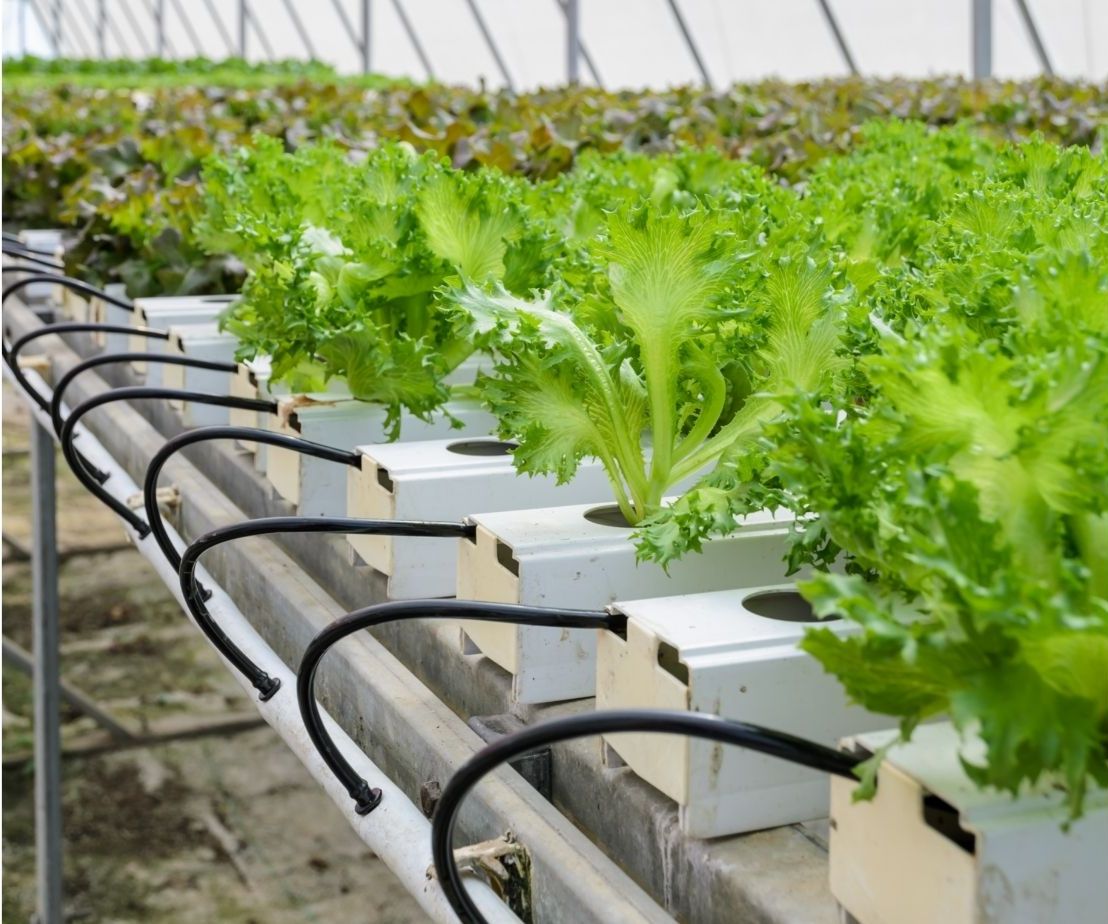Introduction
Plants are grown in a nutrient solution without the use of a rooting medium in true hydroponics. Plant roots are either suspended in a standing aerated nutrient solution or in a nutrient solution flowing via a root channel (Nutrient Film Technique [NFT]), or they are sprayed with a nutrient solution on a regular basis (known as aeroponics). This definition differs from the commonly accepted definition of hydroponics, which formerly encompassed all types of hydroponic cultivation. Hydroponic Cultivation Systems is important aspects for the learners.
Another distinguishing feature of hydroponics is the nutrient solution system, which can be either an “open” system in which the nutrient solution is discarded after passing through the root mass or rooting medium, or a “closed” system in which the nutrient solution is recovered for reuse after passing through the root mass or rooting medium.
Hydroponic systems with less mediums
Aerated nutrient solution in a standing state:
This is the earliest hydroponic technique, dating back to early researchers who utilized it to establish which components were necessary for plants in the mid-1800s. In the 1840s, Sachs and other early researchers grew plants in aerated solutions and investigated the effect of various compounds added to the nutrient solution on plant growth. So, Hydroponic Cultivation Systems is essential. Although some researchers have shifted to flowing and continuous replenishment nutrient solution processes, this methodology is still used for numerous sorts of plant nutrition studies.
The aerated standing nutrient solution approach has certain criteria.
- Suitable rooting vessel
- Nutrient solution

Aerated nutrient solution hydroponic growing system with an aquarium air pump connected to a line to a dispenser at the bottom of the growing vessel to bubble air into the nutrient solution.
The fertilizer solution will need to be replaced on a regular basis, usually every 5 to 10 days, depending on the number of plants, their size, and the volume of nutrition solution. Water loss from the nutrient solution must be replaced on a regular basis with either nutrient-free water (clean water) or a diluted (1/10 strength) nutrient solution, albeit there is a risk that any additional additions of plant nutrient elements would upset the initial balance and harm the plants. It’s also worth remembering that the pH and composition of the initial fertilizer solution will change with each day of use due to root activity and element uptake—changes that can harm plant growth. “Should the pH and elemental content of the nutrient solution be restored to their previous values daily before replacement?” becomes the query. Adjustment other than water loss replacement is the standard technique in most cases.
Nutrient solution’s composition for commercial use
Another reason why this method of hydroponically growing is unsuitable for commercial use is that the amount of water and chemicals used is relatively high due to the need for frequent refilling. Furthermore, the nutrient solution’s composition is constantly changing, necessitating constant monitoring and adjustment to maintain the pH, elemental ion balance, and sufficiency concentration levels during the use period, which can last anywhere from 35 to 45 days, depending on the plant species grown and rate of plant growth. Temperature control and root disease control are also necessities if this way of growing is to be successful.






Leave a Reply